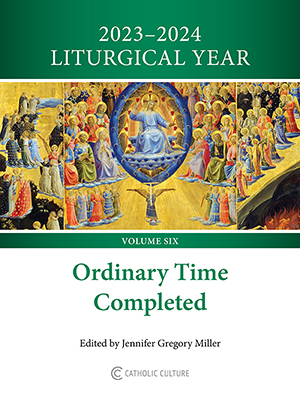A Citadel of Prayer and Marian Piety
To my Venerable Brother Archbishop Francesco Saverio Toppi Pontifical Delegate
1. During the Great Jubilee of the Year 2000, the Church in Pompei will be gladdened by a further gift of grace, for 13 November will mark the 125th anniversary of the arrival of the picture of Our Lady of the Rosary. This "visit" of Mary changed the spiritual and civil face of Pompei, which since 1875 has been more and more transformed into a citadel of prayer, a centre of Gospel outreach, a place of countless graces and conversions, a stronghold of Marian piety, which is looked upon from every part of the world.
While spiritually joining the Ecclesial Community of Pompei on this happy occasion, I wish to thank the Lord for the gifts with which he has enriched it, imploring, through the intercession of the Blessed Virgin, special heavenly favours on you, Venerable Brother, and on all those who are entrusted to your pastoral care.
2. The Great Jubilee and this special anniversary of yours are interrelated and offer particular reasons for reflection and thanksgiving. The Holy Year calls the attention of the faithful to the mystery of the Incarnation of the Word and invites them to contemplate the One who, "though he was in the form of God, did not count equality with God a thing to be grasped, but emptied himself, taking the form of a servant, being born in the likeness of men" (Phil 2: 6-7). Pompei is the land of the Holy Rosary, where the fervent outpouring of the Hail Mary from the hearts of the faithful prompts them to contemplate the inner responsiveness of the Blessed Virgin in accepting with faith the announcement of the birth of God's Son in human flesh.
In the same way the Jubilee's resounding invitation to listen lovingly to the Word of God and to conform our lives to the Gospel finds a happy echo in the practice of the Fifteen Saturdays, which Bartolo Longo popularized among the faithful, with the intention of spurring them to contemplate Christ. How then could we fail to see the eloquent harmony between the Redeemer's poor, humble birth in the stable at Bethlehem and the equally simple, modest circumstances in which the picture of Our Lady arrived in Pompei?
The "mystical crown", which the Virgin offers to those who turn to her as "the sweet chain that reconnects us with God", also proves to be a precious means for better understanding and living the great dimensions of the Jubilee. The Rosary, which Bartolo Longo considers a bulwark against the enemies of the soul, unites us with the angels and is a "safe harbour in our common shipwreck" (Supplication to the Queen of the Most Holy Rosary of Pompei).
3. The most profound message of the Jubilee is the call to conversion and the urging of an authentic personal and social renewal. Entering the new millennium, the Christian community is invited to expand its vision of faith to new horizons for the proclamation of the kingdom of God. The awareness that it acquired at the Second Vatican Council of its mystery and of the apostolic task entrusted to it by its Lord commits it to live in the world with the knowledge that it must be "the leaven and, as it were, the soul of human society, destined to be renewed in Christ and transformed into the family of God" (cf. Incarnationis mysterium, n. 2).
Christians can find in the Rosary an effective aid in their efforts to achieve these objectives of the Jubilee in their own lives. By inviting them to welcome the announcement of the birth of God's Son in human flesh with the wonder of Mary, Joseph, the Shepherds, the Magi and all the poor of Israel, the Joyful Mysteries arouse in Christians, as they did for the founder of the Shrine of Pompei and for many others devoted to Our Lady of the Holy Rosary, the desire to bring the good news of the Saviour with renewed ardour to the people of our time.
Through contemplation of the Sorrowful Mysteries, the Rosary prompts the faithful to feel sorry for their sins and, by inviting them to trust in the help of the One who prays "for us sinners, now and at the hour of our death", it fosters a desire to receive the sacrament of Reconciliation in order to correct whatever is wrong in their lives. In this way, Bl. Bartolo Longo found the strength to reorient his own life and to become docile to the action of the Holy Spirit, who alone transforms sinners into saints.
Through contemplation of Christ in his Resurrection and Ascension into heaven, the Glorious Mysteries immerse us in the ocean of Trinitarian life, communicated by the Paraclete Spirit to all believers and, in a special way, to Mary our Mother and sister. By looking at her, assumed into heaven and into the glory of the saints, Christians are encouraged to seek and desire the "things that are above", and by yearning for the eternal goal they become aware of the necessary means for achieving it, that is, fidelity to the divine commandments, reception of the Church's sacraments and humble conformity to the will of God.
The commitment to the unity of believers in Christ and to fraternal harmony among nations, presented again by the Great Jubilee, also finds a special resonance in the anniversary that the Shrine of Pompei celebrates this year. In the Jubilee of 1900, at the beginning of our 20th century, Bl. Bartolo Longo wished to complete the shrine's monumental façade as a votive offering for peace. To this end he collected offerings and subscriptions from the faithful around the world. Even now, at the dawn of the third millennium, peace is the ardent wish of mankind, and we must pray for peace with confidence in every corner of the world.
4. Venerable Brother in the Episcopate, I fervently hope that, by following the example of Bl. Bartolo Longo, this diocesan community will see these occasions of grace as an urgent incentive to proclaim Jesus Christ, the Redeemer of man, with renewed fervour. In this regard, the pastoral plan prepared for this Jubilee year seems most appropriate. It is inspired by the three words "humility, simplicity, poverty", the three words that characterized the earthly life of Jesus, Mary's own manner and the ascetical programme of Bl. Bartolo Longo. How could we forget that from nothing and with poor, humble means, he, guided by the Spirit, erected in Pompei a shrine that today has a world outreach? The writings of Bl. Bartolo, which even then reached people of every language and nation, continue to offer useful encouragement for reflection and the spiritual life.
May this precious legacy, which is your special title of honour, be accepted by you and offered again to contemporary society, so that in the church of Pompei, where the Mother continues to show her divine Son as the only Saviour of the world, many men and women in search of peace may have the joyous experience of being "visited" by Christ, as did Elizabeth and John the Baptist when they met the Blessed Virgin (cf. Lk 1: 39-56).
With these wishes, I invoke, through the intercession of Bl. Bartolo Longo, the maternal protection of the Queen of the Holy Rosary on the priests, the men and women religious, the entire diocesan community, the pilgrims and the devoted faithful, and I willingly impart to all a special Apostolic Blessing.
© L'Osservatore Romano, Editorial and Management Offices, Via del Pellegrino, 00120, Vatican City, Europe, Telephone 39/6/698.99.390.
This item 2845 digitally provided courtesy of CatholicCulture.org






